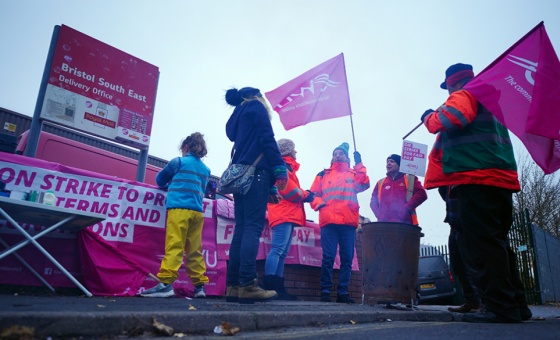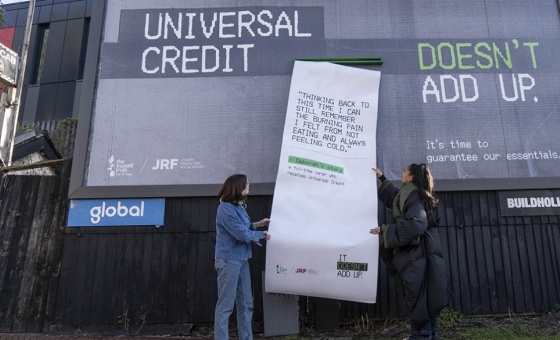This is the last article you can read this month
You can read more article this month
You can read more articles this month
Sorry your limit is up for this month
Reset on:
Please help support the Morning Star by subscribing here
ARCHITECT and urban planner Mark London passed away in August. London is best known for his work in leading the public consultation for the redevelopment of the Old Port of Montreal, where he enabled the transformation of the former Expo 67 site into a large park as well as rehabilitating Mount Royal Park and the Lachine Canal.
And far outside of Montreal, gentrification of unused parts of cities, often unused port areas, became part of what came to be known as “rehabilitation,” which formed part of the ethos of “urban renewal” and in Britain, “urban regeneration.”
I witnessed this first-hand when I moved to New York in 1988 and learned very quickly the word for this practice on parts of the city where poorer people lived, insultingly labelled “gentrification,” a reprehensible term for “putting people” in the place of people who are assumed not to exist (eg the poor, people of colour).
How did it come to be that housing in London today is so competitive that signing a contract for a flat is one of the most difficult tasks to undertake for Londoners earning under £25,000 —most especially freelancers and artists.
Discrimination is rife and renting is now surpassing home ownership, half of London landlords fail to declare rental income and Airbnb is taking over what would have been regular rental flats.
As a result, most renters in London who are not in lucrative professions like banking and trading or who don’t have a curriculum vitae which reveals them to be of a certain class are now finding themselves priced out of affordable housing.
With Airbnb driving up rental prices and the buy to let landlords sucking the life out of both London’s rental and purchase markets, it is no wonder that so many Londoners have moved out of London to cities around the country, or abroad, with many moving to Berlin.
Among the groups most affected by the rental crisis are artists with studios like Hackney Wick’s Vittoria Wharf which has faced demolition since 2012.
Since then, Vittoria Wharf has been the site of dispute between a group of artists fighting to keep this site and the London Legacy Development Corporation (LLDC).
Finally in March, this historic building was destroyed and dozens of artists dispossessed of their homes and work spaces.
All this in order for LLDC to ostensibly put up two footbridges —initially said to be a steel wire rope bridge, but ultimately late modern designs.
But there are already two bridges in the area. The actual plan was not at all about the footbridges — that was the excuse.
The LLDC told the artists at Vittoria Wharf that they would be putting up a “creative hub and social enterprise of fully converted live-work studios” but so far there is nothing on paper promising these artists their spaces back.
Musician Nima Tehranchi, a member of the political art punk band Arrows of Love, was one of the artists who led the fight to save Vittoria Wharf and was forced to vacate his space.
He reported to me that the LLDC “forced people out while giving them £750” after London Mayor Sadiq Khan refused to intervene and, worse, Khan’s deputy Jules Pipe not only did the final review but was appointed to LLDC’s board in May of this year.
What I witnessed during the public consultation process over Vittoria Wharf is largely that it was a theatre established to make communities believe that certain changes would include their voices.
Yet in the end, the development corporation did what it wanted and cherry-picked which consultations it mentioned in its draft, while placing adverts for public consultations in publications that most residents didn’t have access to, with many consultations announced after the artists in Vittoria Wharf were served eviction notices.
This echoes the events in Glasgow before the Commonwealth Games when communities were similarly torn apart and CPOs were used to evict people from their homes whereby fake public consultations took place.
The public complained about their participation being ignored but nothing changed and building proceeded in complete disregard of community protests.
There is now a growing pattern with urban development where private housing projects are couched as “regeneration” when the planned works are clearly a cover for gentrification.
The most recent case is that of Strongroom studios in Shoreditch which have been in operation for over 30 years by skilled artisans, clockmakers, and musicians.
The plan is to replace their studios with 1,400 mostly luxury flats.
And similarly last year there was a plan to demolish Fulham Studios where numerous artists and designers were based at an old gas works and to replace them with approximately 1,300 homes. And the list of such projects is quite long around the entire country.
Artists’ studios provide a convenient pretext for developers to instal what is called an “innovation cluster” such that commercial and residential spaces are interspersed amid the artistic backdrop of creativity and liveliness.
What happened in Vittoria Wharf shows what a sham this regeneration discourse truly is.
Artistic communities merely serve as the pretext for investors and developers to sell an idea while making false promises to the artists of a future home on the new site.
Now that Vittoria Wharf has been demolished, these artists have been altogether rendered homeless while the marketing of their artistic practices successfully served to sell the demolition of their lives to the wider community.
Urban planning in London needs to stop extracting a symbolic value of artists’ works without giving them a future in the community that developers are using in launching their gentrification projects.
We need to insist that renters’ rights are fundamentally human rights and that responsible social housing be implemented for low-paid workers and artists in the city.











